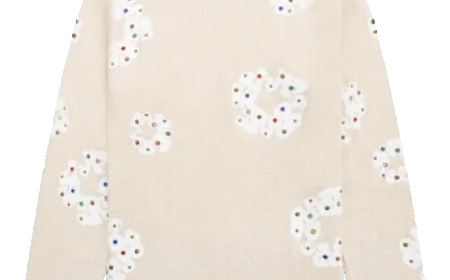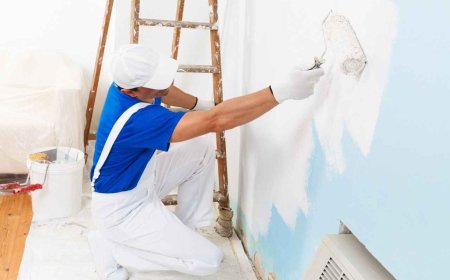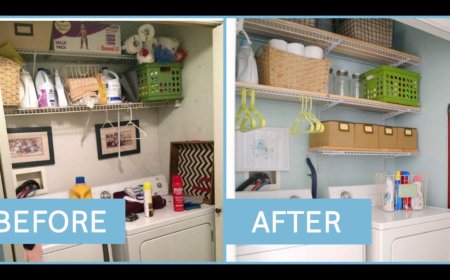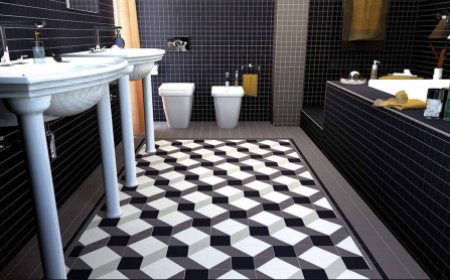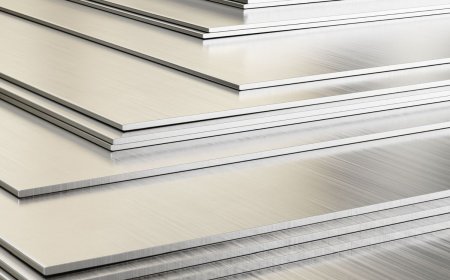Paint ROI Calculator: How Much Value Does Fresh Paint Add to Your Home?
Discover how much value fresh paint adds to your home. Use our paint ROI calculator for smart upgrades before selling or renovating your property.
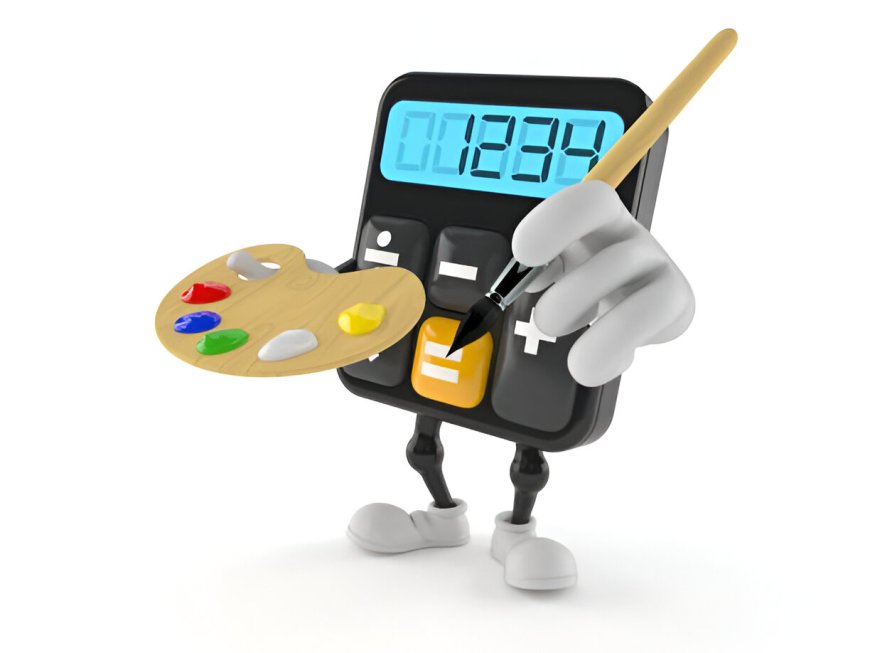
Are you ready to unlock your home's hidden value with just a brush and some paint? Fresh paint creates magic that buyers notice right away. Smart owners know that house painting ROI often tops the list of best home upgrades. Indeed, a simple coat of paint can boost your home's worth by up to 10% or more.
Today's market rewards homes that shine with fresh appeal. When you repaint home before selling, you create instant buyer interest. Plus, the best colors for resale make your space feel larger and newer. Most buyers will pay extra for homes that look move-in ready.
This guide reveals exactly how much value fresh paint adds to your home. We'll show you the real numbers behind house painting ROI and share proven tips. Also, you'll learn which property value boost painting tricks work best. Finally, we'll give you real estate paint tips that agents swear by.
Ready to turn your biggest asset into your best profit maker? Let's dive into the numbers that matter most.
How Much Value Does Fresh Paint Really Add?
The Numbers Don't Lie
Fresh paint delivers one of the highest returns on any home project. Most homes see a 107% return on their paint job costs. That means for every $1,000 you spend, you get back $1,070 in home value. Not many home upgrades beat those odds.
Real estate experts agree that house painting ROI beats most other fixes. Kitchen updates might cost $20,000 but only return 60% of that cost. Paint jobs often cost under $3,000 but return every penny plus more. This makes painting the smartest move before any sale.
However, not all paint jobs create equal value. The right colors and quality work matter most. When done right, fresh paint can add $3,000 to $10,000 to your home's value. The exact amount depends on your home's size and local market trends.
Why Paint Works So Well
Paint works because it fixes many problems at once. First, it covers wall damage and stains that turn buyers away. Second, it makes rooms look bigger and brighter than before. Third, it signals to buyers that the home has been well cared for.
Moreover, paint is one fix that buyers can't ignore. They see fresh walls the moment they walk through your door. This instant impact creates a strong first view that lasts through their entire visit. Many buyers make their choice within the first few minutes of seeing a home.
When Should You Repaint Home Before Selling?
Timing Makes All the Difference
The best time to repaint home before selling is 2-4 weeks before listing. This timing gives paint time to cure and any odors to fade away. Also, it allows you to stage the home right after the work is done.
Spring and summer remain the peak selling seasons in most markets. Therefore, plan your paint job for late winter or early spring. This timing puts your home on the market when most buyers are looking.
Additionally, avoid painting right before showings start. Buyers don't want to smell paint fumes or worry about wet walls. Fresh paint should look perfect and smell neutral when buyers visit.
Signs Your Home Needs Fresh Paint
Several clear signs tell you when it's time to repaint. First, look for scuff marks, crayon marks, or nail holes on walls. These small damages add up to make rooms look tired and worn.
Second, check if your current colors look dated or too bold. Bright purple or dark brown walls can turn buyers away quickly. Neutral colors appeal to more buyers and make rooms feel larger.
Third, notice if paint is peeling, fading, or chalky to touch. These issues signal that paint has reached the end of its life. Fresh paint will make a huge visual impact in these cases.
Best Colors for Resale: What Actually Works
The Power of Neutral Tones
Neutral colors remain the best colors for resale in today's market. Buyers want to see their own items in the space. Bold colors make this harder and can actually reduce offers.
White, beige, and light gray top the list of buyer favorites. These colors make rooms feel clean, fresh, and move-in ready. They also reflect light better, making spaces appear larger than they really are.
However, avoid stark white or builder beige if possible. These colors can feel cold or cheap to modern buyers. Instead, choose warm whites or soft grays with slight color hints.
Colors That Hurt Your Sale
Certain colors can actually reduce your home's value and appeal. Dark colors like deep red, purple, or black make rooms feel smaller. They also require more coats to cover when buyers want to change them.
Bright colors like orange, yellow, or lime green date your home quickly. What looks trendy today might look silly in just a few years. Buyers worry about having to repaint right after buying.
Personal colors also create problems during sales. Sports team colors, bold patterns, or unique themes turn away buyers who don't share your interests. Keep things simple and welcoming instead.
Property Value Boost Painting Strategies
Focus on High Impact Areas
Not every room needs fresh paint to create maximum value. Focus your efforts on the areas buyers see first and spend time in most. These strategic choices maximize your property value boost painting impact.
The front door creates the very first view buyers get. A fresh coat in a welcoming color sets a positive tone. Classic colors like navy blue, forest green, or burgundy work well here.
Living rooms and main hallways deserve priority too. These spaces connect to other rooms and get lots of foot traffic. Fresh paint here makes the whole house feel newer and cleaner.
Professional vs DIY Painting
The quality of your paint job affects the value you'll see. Poor paint jobs can actually hurt your home's appeal and reduce offers. Buyers notice uneven coverage, messy edges, and cheap-looking finishes.
Professional painters deliver results that buyers expect in today's market. They use quality materials and have the skills to create smooth, even coverage. This level of finish signals quality throughout the home.
However, skilled DIY painters can achieve good results with proper prep work. The key is taking time to do each step right. Rush jobs always show and can hurt your sale price.
Real Estate Paint Tips From the Pros
Preparation Makes Perfect Results
Real estate paint tips from top agents always start with proper prep work. This step takes the most time but creates the biggest impact on final results. Buyers notice the details that separate great paint jobs from average ones.
First, fill all holes and cracks with quality filler. Sand rough spots smooth and clean all surfaces before painting. This extra work creates the smooth finish that buyers expect in today's market.
Second, use primer on any dark colors or stained areas. Primer helps new paint cover evenly and prevents old colors from showing through. This step ensures rich, even color that looks professional.
Quality Materials Matter
The paint and supplies you choose affect both the look and lasting power of your work. Cheap paint often requires more coats and doesn't cover as well. Quality paint goes on smoother and looks better longer.
Choose paint with built-in primer for better coverage in fewer coats. Semi-gloss or satin finishes work well in most rooms. These finishes clean easily and reflect light without showing every small flaw.
Don't forget about brushes and rollers either. Quality tools create smoother finishes and make the work go faster. Cheap brushes leave marks and make even good paint look poor.
Lighting Affects Color Choices
Paint colors look very different under various types of lighting. What looks perfect under store lights might look wrong in your home. Test colors in the actual rooms where you'll use them.
Natural light changes throughout the day and affects how colors appear. Morning light tends to be cooler while evening light is warmer. Check your color choices at different times of day.
Also, consider the type of bulbs you use in each room. LED lights show colors differently than old bulbs. Make sure your paint choices look good under your actual lighting setup.
Calculating Your Paint ROI
Simple Math for Big Returns
Most paint jobs cost between $2,000 and $4,000 for average-sized homes. The exact cost depends on your home's size, paint quality, and whether you hire help. These costs include both materials and labor if you use pros.
To calculate your return, compare your home's value before and after painting. Many homes see increases of $3,000 to $8,000 from fresh paint alone. This creates returns of 150% to 200% on your initial cost.
For example, if you spend $3,000 on paint and add $5,000 in value, your return is 167%. Few other home projects deliver this level of return on your money.
Factors That Affect Your Returns
Several factors influence how much value fresh paint adds to your home. Local market conditions play a big role in what buyers expect and pay. Hot markets often see higher returns from all upgrades.
Your home's current condition also matters greatly. Homes with very tired paint see bigger jumps in value. Homes with newer paint might see smaller but still positive returns.
The quality of your paint job affects returns too. Professional-level work creates more value than obvious DIY jobs. Buyers pay more for homes that look move-in ready.
Common Paint ROI Mistakes to Avoid
Choosing the Wrong Colors
The biggest mistake sellers make is choosing colors they love instead of colors buyers want. Your personal taste doesn't matter when selling your home. Focus on what appeals to the most buyers possible.
Avoid trendy colors that might look dated quickly. Also, skip colors that reflect your hobbies or interests. Buyers want to see their own lives in your space, not yours.
Similarly, don't try to match existing decor or furniture. You'll likely remove these items anyway. Choose colors that work with any style or decor choice.
Skipping Important Prep Work
Many DIY painters skip prep work to save time and money. This choice almost always backfires and creates poor results. Buyers notice sloppy paint jobs and may reduce their offers.
Proper prep work includes cleaning, sanding, filling holes, and using primer. These steps take time but create the smooth, even finish buyers expect. Don't skip these crucial steps.
Also, protect floors, furniture, and fixtures during painting. Paint splatters and drips can damage expensive items. Taking time to cover things properly prevents costly mistakes.
Using Low-Quality Materials
Cheap paint might save money upfront but often costs more in the long run. Poor coverage means more coats and more work time. The final result rarely looks as good as quality paint.
Low-quality brushes and rollers create streaks and uneven coverage. These tools can actually make good paint look bad. Invest in decent tools for better results.
Don't forget about primer either. Skipping primer on dark colors or stained walls shows in the final result. This step ensures even coverage and rich color.
Maximizing Your Paint Investment
Strategic Room Selection
You don't need to paint every room to see good returns. Focus on the rooms that matter most to buyers and create the biggest impact. This targeted approach maximizes your results per dollar spent.
Main living areas like the living room, kitchen, and master bedroom deserve priority. These rooms get the most use and attention from buyers. Fresh paint here creates the biggest positive impact.
Bathrooms and hallways also benefit greatly from fresh paint. These spaces often show wear and tear more quickly. New paint makes them feel clean and well-maintained.
Timing Your Paint Project
Schedule your paint project to finish 2-3 weeks before listing your home. This timing allows paint to cure fully and any odors to fade away. Buyers shouldn't smell paint when they visit.
Also, consider the season when planning your project. Spring and summer are peak selling seasons in most areas. Having fresh paint ready for these busy times maximizes your exposure.
Plan for potential delays too. Weather, supply issues, or other problems can push back your timeline. Starting early gives you buffer time to handle any issues.
Working with Real Estate Professionals
Your real estate agent can provide valuable input on paint choices and timing. They know what buyers in your area prefer and expect. This local knowledge helps you make smarter color choices.
Professional painters can also provide valuable advice on colors and finishes. They see what works in different homes and markets. Their experience can help you avoid costly mistakes.
Don't forget about home inspectors either. They can spot areas that need extra attention before painting. Fixing these issues first ensures your paint job looks its best.
Ready to Transform Your Home's Value?
The numbers speak clearly: fresh paint delivers one of the best returns on any home project. With proper planning and execution, you can add thousands of dollars to your home's value for a fraction of that cost. The key lies in choosing the right colors, using quality materials, and timing your project perfectly.
Don't let your home sit on the market longer than needed. Buyers today expect move-in ready homes with fresh, neutral paint throughout. When you repaint home before selling, you're giving buyers exactly what they want most.
Contact a local painting professional today to discuss your options and get a detailed quote. The sooner you start, the sooner you'll see those extra dollars in your pocket. Your home's transformation is just one paint job away.
Conclusion
Fresh paint remains one of the smartest investments any seller can make. The house painting ROI typically exceeds 100%, making it more profitable than most other home projects. When you choose the best colors for resale and focus on high-impact areas, you maximize your property value boost painting potential.
Remember that success depends on proper planning, quality materials, and good timing. These real estate paint tips from industry pros can help you avoid common mistakes and achieve the best results. With the right approach, your paint project will pay for itself many times over while helping your home sell faster in today's competitive market.









